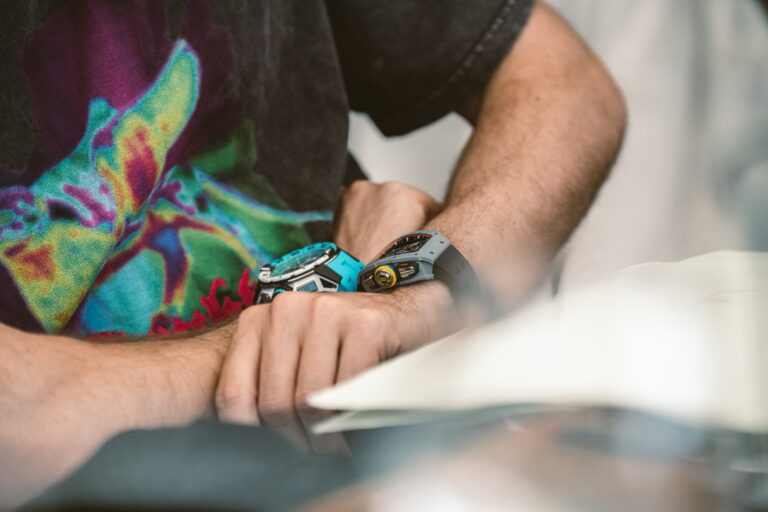Russell Sheldrake
Richard Mille stands out from most other watch brands around the world. The watches they produce stand out on the red carpet, on the stage, and on the sports field thanks to their unique case shapes and innovative materials and movements. But it’s not just the watches that set this independent brand apart. What intrigues me about the brand these days is not so much the use of high-tech materials or modern aesthetics, but the way they approach and treat their customers and partners. These watches are hard to come by due to their rarity, but you won’t hear the complaints directed at other brands that potential customers have to go to great lengths to get their hands on the watch they want. There is simply a limited production volume, which limits costs.
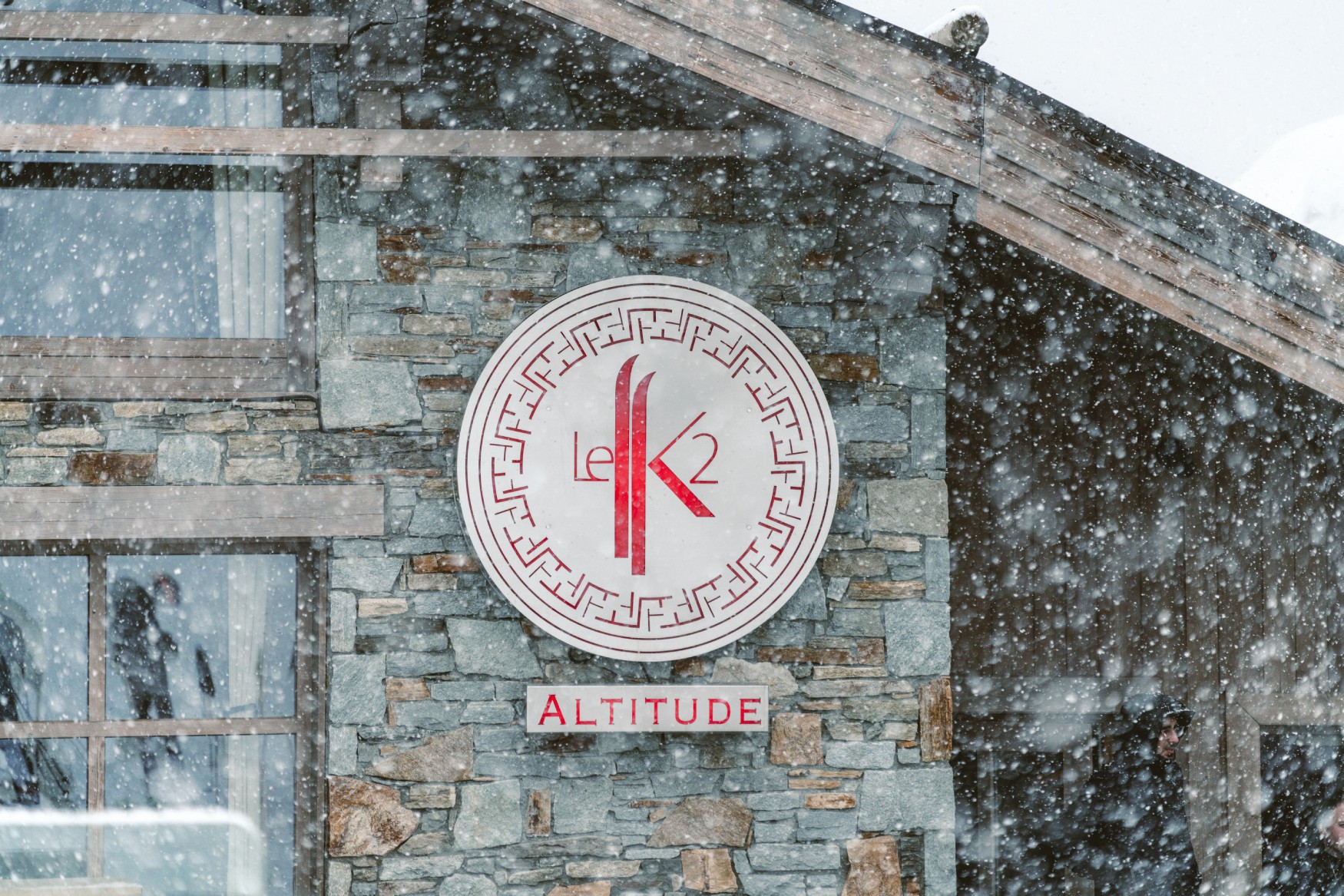
To answer my question of how Richard Mille can treat their customers in such a proactive way, I was invited by the company to join them on a trip described as a “ski clinic” in the luxurious surroundings of Courchevel 1850. It’s fair to say that I’m a novice when it comes to skiing, but when you’re given the opportunity to interact with multiple athletes and world champions from various disciplines, including skiing, snowboarding, biathlon and freediving, it’s something I couldn’t pass up.
Aside from making sure I didn’t break any bones on the slopes the week before Watches & Wonders, my biggest goal for this trip was to understand exactly what makes Richard Mille so unique in the eyes of its customers. Considering the high entry level to become a customer of the brand, there must be a reason beyond the products themselves that makes some collectors so loyal. Before boarding the plane, I learned that the trip would technically take place in two parts: one for the press and one immediately after for customers. While those of us in the press are relatively familiar with the idea of press trips to discover a brand and certain products, the concept of organizing a similar trip exclusively for customers, allowing them to meet senior members of the Richard Mille team and partners of the brand, is new to me.
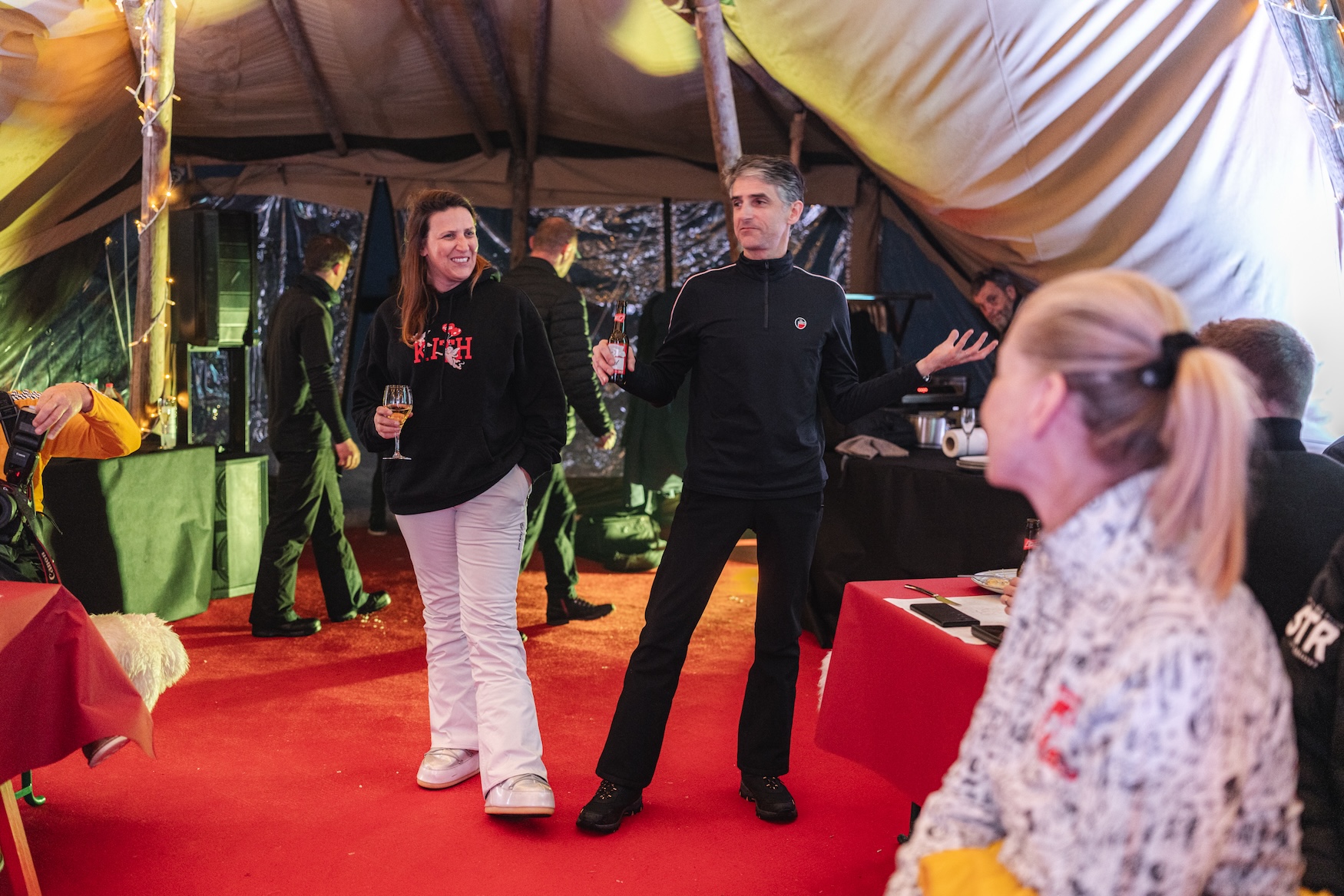

But this is standard practice for Richard Mille. When I spoke to the brand’s marketing director, Tim Malachard, he explained, “We try to invite all our customers to these events, whether they’re buying from us for the first time or have been buying from us for 20 years. We want to show them the same level of trust that they’ve shown in us.” Malachard told the story of one customer who took out a loan to buy his first Mille watch. He remembered how this person wanted the watch so badly that they were prepared to pay off the loan for five years just to get it, and he wanted this customer, and all of their customers, to feel that their trust was rewarded.
Another side of Richard Mille that I didn’t know before this trip is how deeply connected the company is to snow sports. I’ve seen Richard Mille watches in Formula 1, on the wrist of Grand Slam winner Nadal, and on golf courses, but I’d never thought about their connection to skiing and winter sports in general. On this trip, I and several other journalists had the opportunity to interact, talk, and learn from the likes of Ester Ledecka, Johannes Thingnes Boe, Alexis Pinturault, and Arnaud Gerard, all of whom have a combined total of 12 World Championship wins and seven gold medals, with the tally still growing. It’s an incredible achievement, but what does Richard Mille have to do with winter sports, and why go to the trouble and expense of gathering so many talented people, journalists, and customers at an altitude of almost two kilometers above sea level?
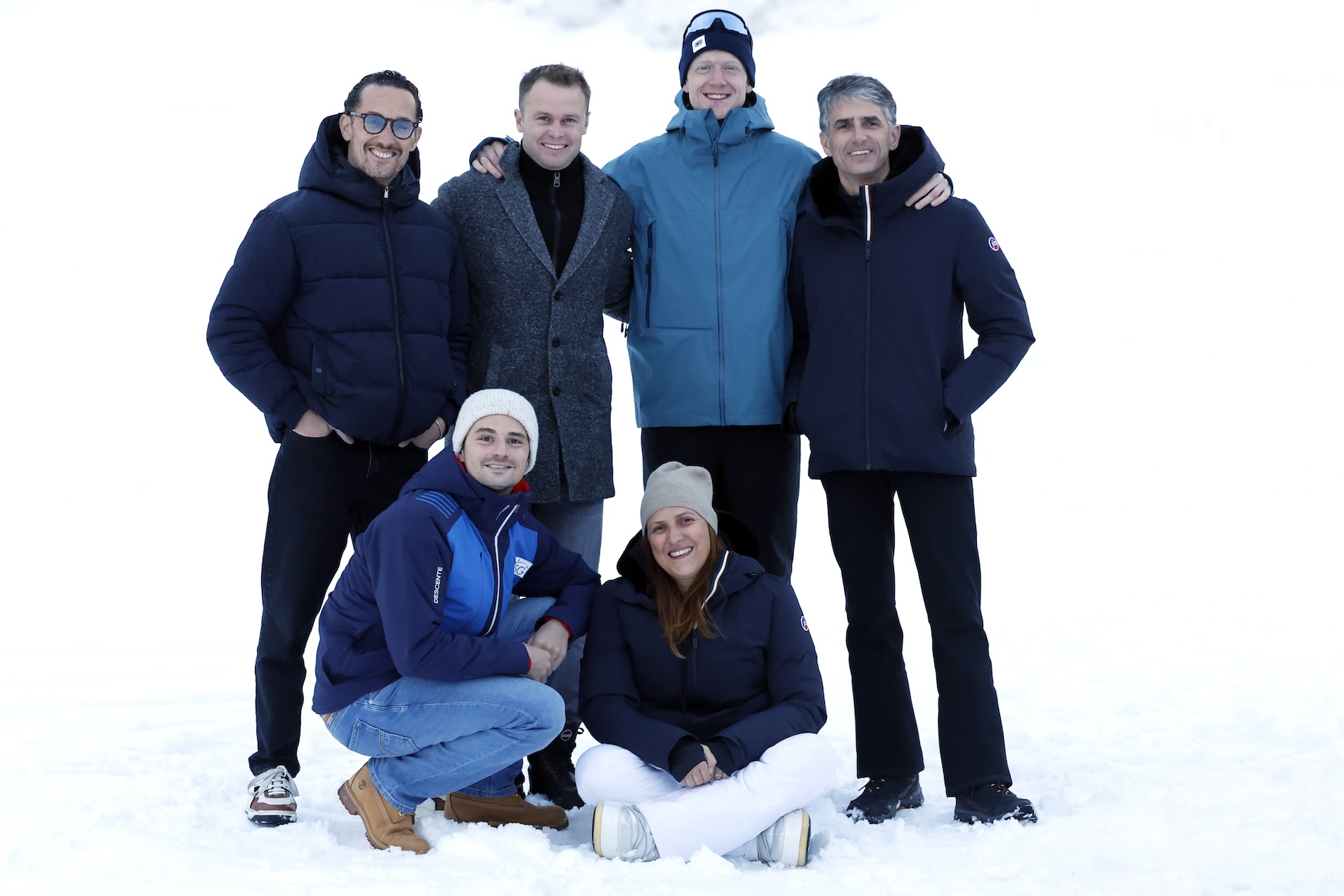

Well, the first half of that question is easily answered by the fact that the brand always strives to test its watches in the most extreme conditions. This means Ledecka slamming into a slalom post at over 80 mph wearing an RM 07-04 Automatic Sport, or Gerard submerging an RM 032 to a record-breaking depth of 122 meters in one breath. Just as F1 drivers used to wear Mille watches while competing (before the FIA banned it) and Nadal always had an RM Tourbillon on his wrist when he was on court, all of Richard Mille’s “Friends of the Brand” and “Brand Partners” are now required to wear their watches while competing. And they often do so willingly.


While we can watch top athletes compete on TV, Richard Mille wants us and our customers to see them in action, using these watches, without interrupting their busy schedules. “We don’t force our partners to do anything while they’re competing. Instead, we want to bring them, our customers and the press together in these places outside of competitions, which makes it much more fun for everyone and the quality of the time we spend together is much higher,” explains Amanda Mille, Director of Brands and Partnerships and Richard Mille’s daughter. And that’s definitely the case here. I’ve done countless press junket interviews where you can talk to your interviewee for 20 minutes while the next journalist is waiting at the door behind you, anxious to get in and start the interview. Here, there was no pressure because we had three days to interact with these guys. Whether it was over good food and drinks or on the slopes, the conversation flowed constantly and freely between everyone there.
This free-flowing conversation and relaxed atmosphere is what made this trip special for me. The brand partners did not feel pressured to say any specific lines about the watches while speaking with us. In fact, when I spoke with Singness Boe, he told me that he still keeps in touch with some of the past clients he met on this trip. It’s an incredible perk to be able to become friends with some of the world’s top athletes.
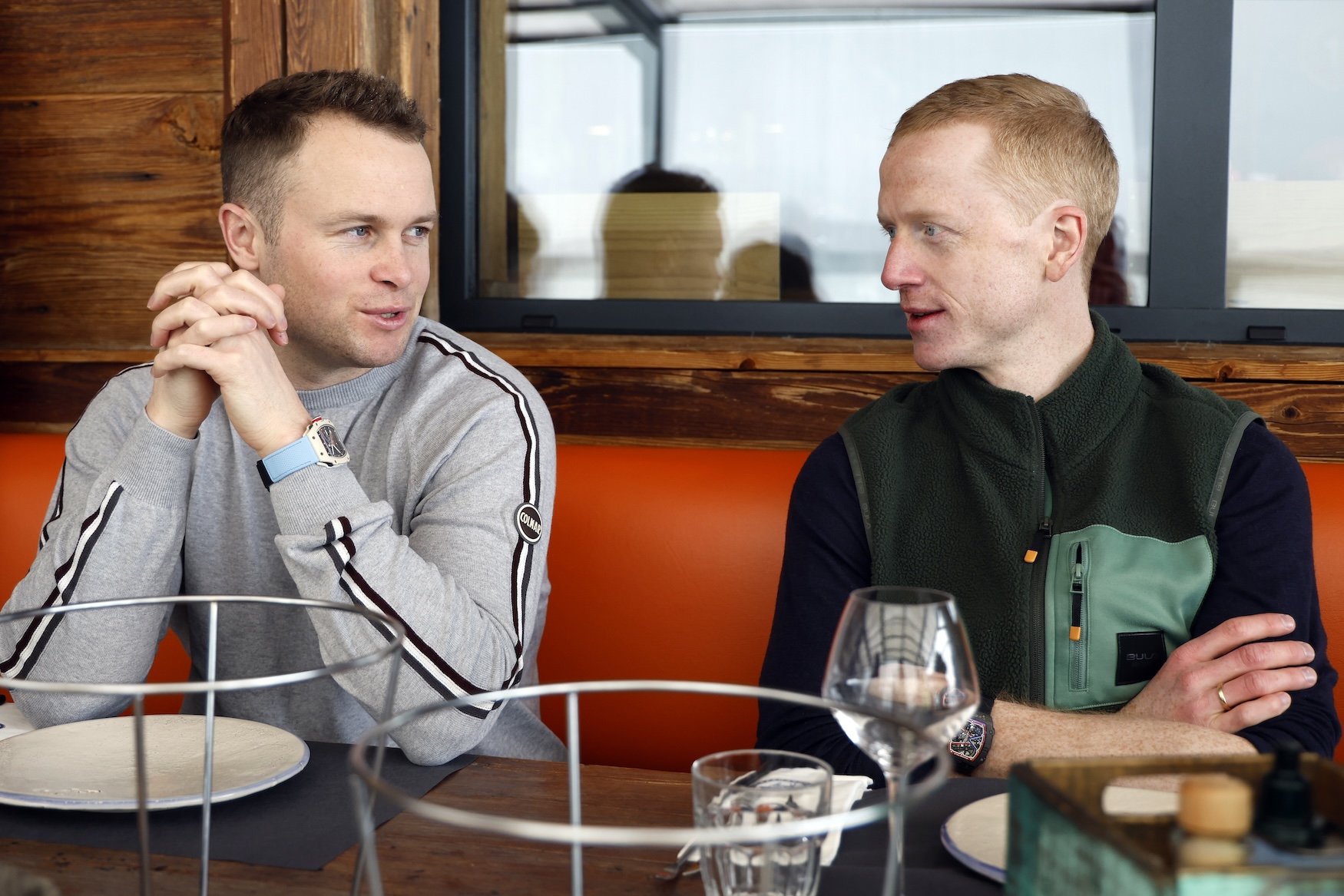

Something Malachard said to me during the trip that would have sounded very embarrassing elsewhere, but here it felt appropriate: everyone invited on these trips is treated like family during their stay. We’ve all heard stories of toxic bosses who claim their company’s work culture is like family, but here it felt genuine, a sentiment that trickles down from the very top of the company to the newest customer. There are stories of Richard Mille himself having been on a trip in the past and being very close with everyone there, building a connection with the people he invited, because that’s exactly what he wants from the people who have placed such a high level of trust in him and his products.
One of the central memories I will take home from this trip was the lunch we had together, with brand representatives, brand partners and press, on the slopes, fresh from battling a blizzard on the summit that morning. During this lunch, no deliverables, facts or figures were mentioned, everyone just chatted and got along as if they had known each other for years. It was clear that our brand partners also enjoyed and cherished this time. As none of them were pulled away from competition and they even had the opportunity to bring their families, it was clear that they were totally relaxed here and did not feel any pressure to perform for us or for the brands. It is very rare to see athletes at this level in this state; usually we are only allowed to see them during competitions or during stressful press visits.
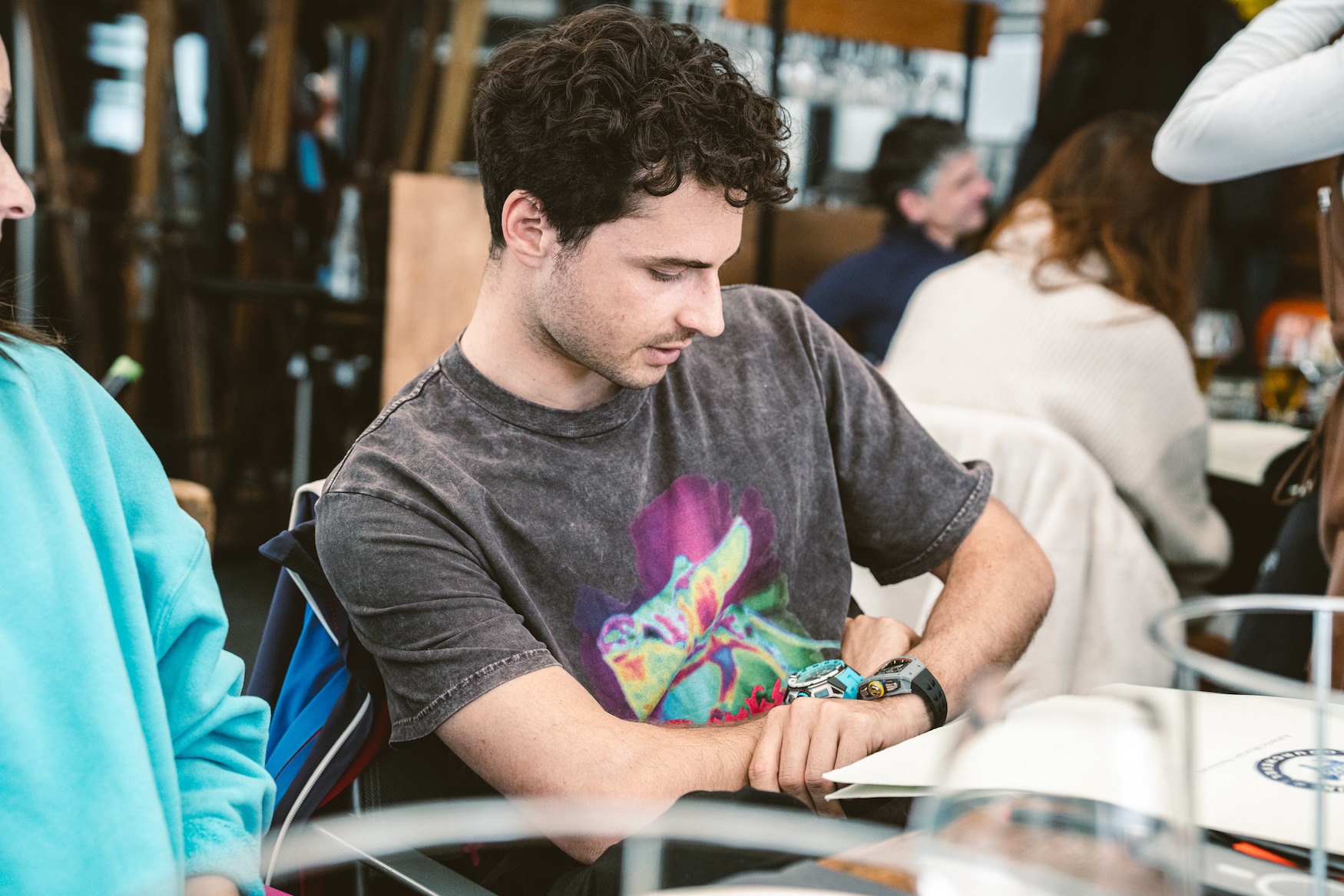

Malachard told me about an event the brand held with its newly acquired partner, Kimi Raikkonen: “He’s famously not a big fan of being interviewed. We did a limited edition interview with his team at the time, and all his PR people were expecting a normal press conference. But we went through our archives and pulled out all the photos from when he was growing up in karting and put them on display. He was really moved. You know, he’s a very outspoken guy, but after the event he came up to me and said, ‘I’m so happy to be with you all. It’s so different to other brands.’ And he ended up hanging out with everyone, taking selfies and stuff. I mean, he was really enjoying himself.” But you don’t have to be an iceman to get the Richard Mille treatment. It’s clear that they treat all their partners the same.
But how does the world’s sixth largest watch brand by sales (according to Morgan Stanley and LuxeConsult) maintain such a personal connection with every customer, inviting them to events like this but also making a connection at the same time? It starts at the point of sale. Richard Mille now has 40 boutiques around the world and was one of the first brands to move away from multi-brand and third-party retailers and embrace verticalization. This means that everyone who sells a Richard Mille watch is an employee of the brand and has been trained by the brand.
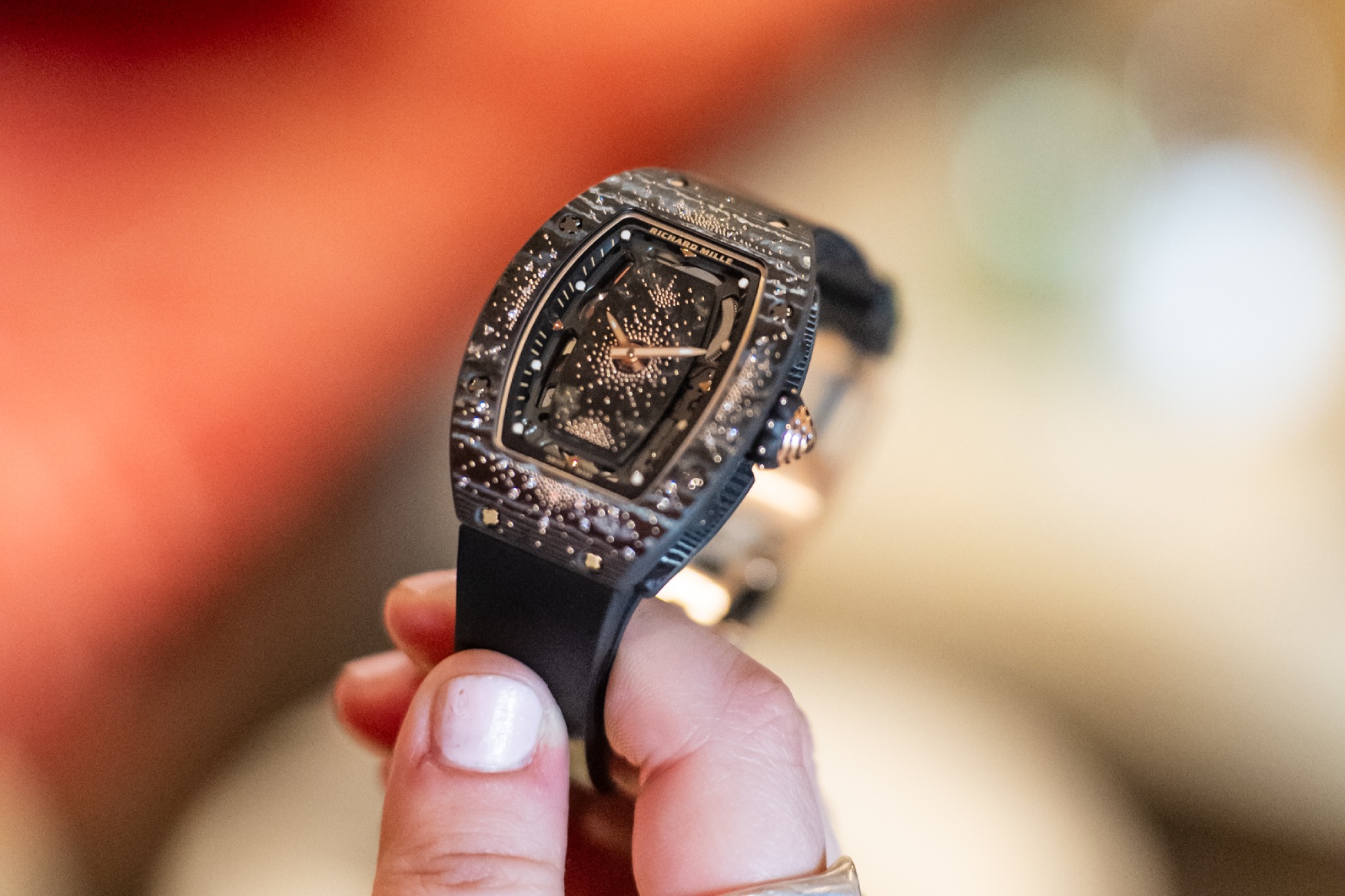
This allows the brand to connect directly with everyone who purchases one of their watches, establishing a connection that helps drive brand loyalty. This is just the beginning of the brand’s customer strategy, but as I’ve witnessed firsthand, there seems to be no limit to the generosity the company shows to those who buy its watches. While the brand wants to get its watches into the hands of people who will use them for a long time, it also recognizes that people need to let go of their watches for various reasons. That’s why every market has its own pre-owned boutiques, such as Ninety in Geneva and London, where used Milles can find new homes with the peace of mind that they will stay within the brand’s ecosystem.
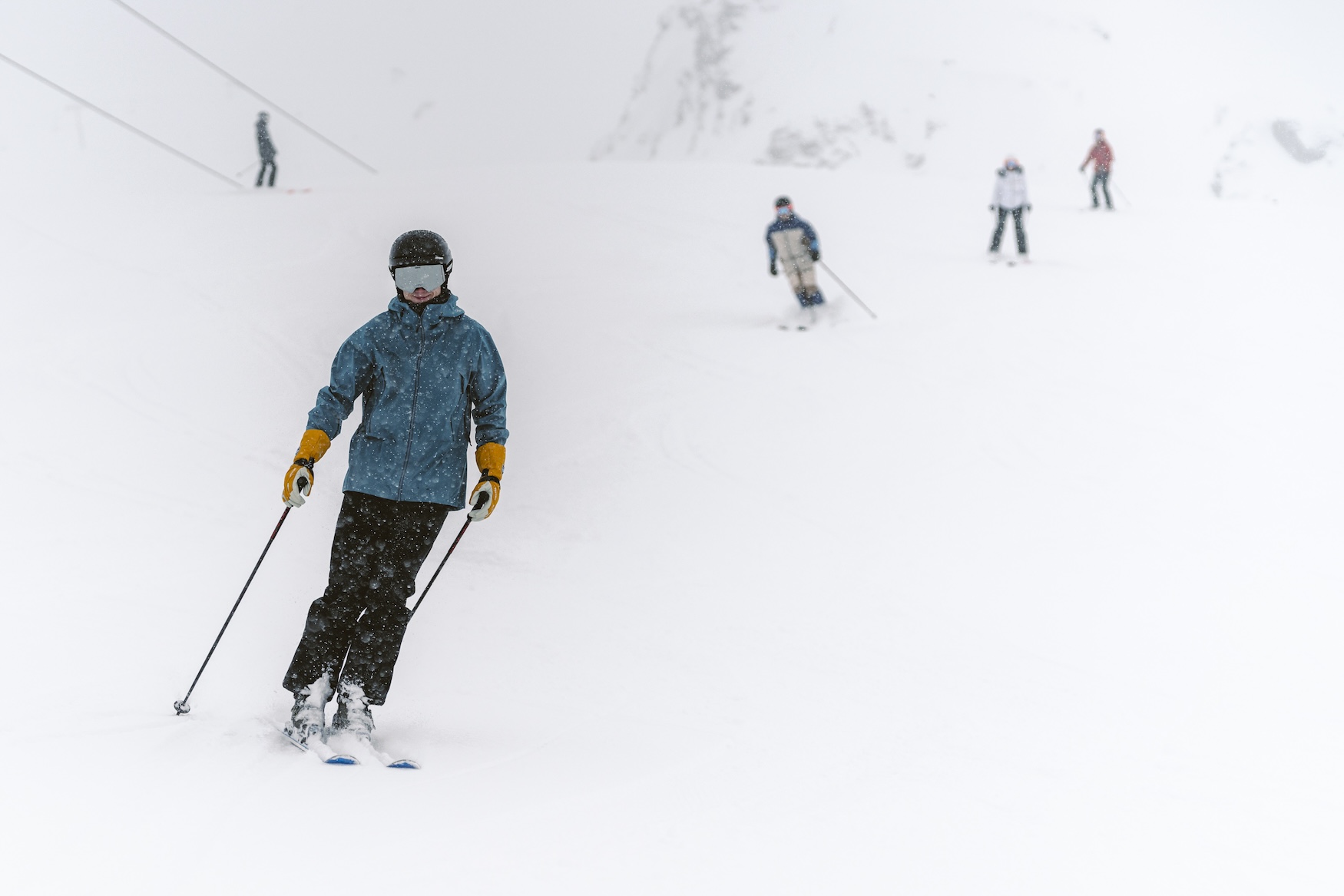
All this is reflected in the painting I painted over three days in Courchevel. Richard Mille does nothing by halves, especially when it comes to personal relationships. I use the word “personal” for a reason, because in all of this, there seems to be very little to do with business. It all comes down to the human element that we journalists often like to romanticize when talking about watchmaking, but Richard Mille makes it real.
